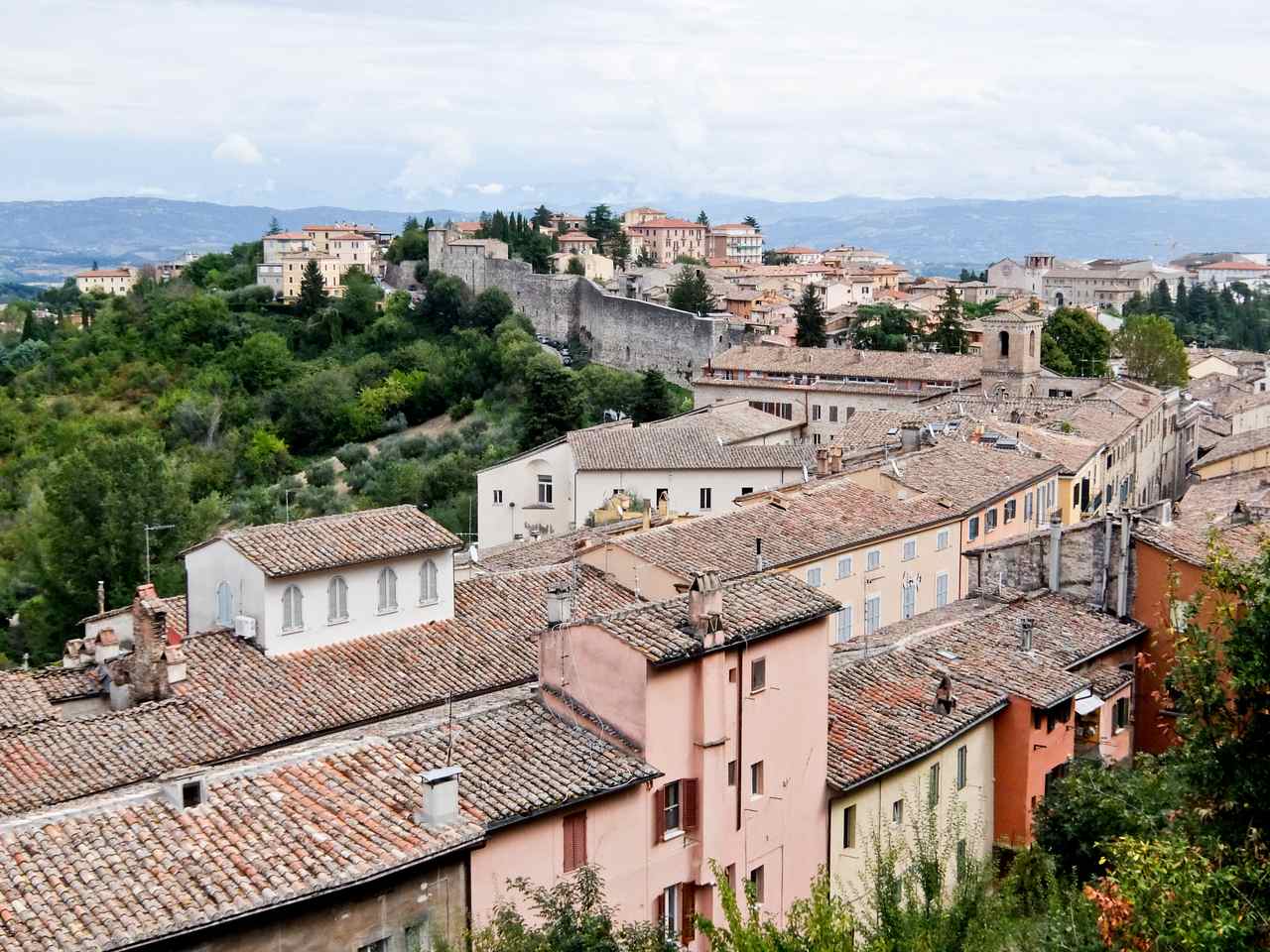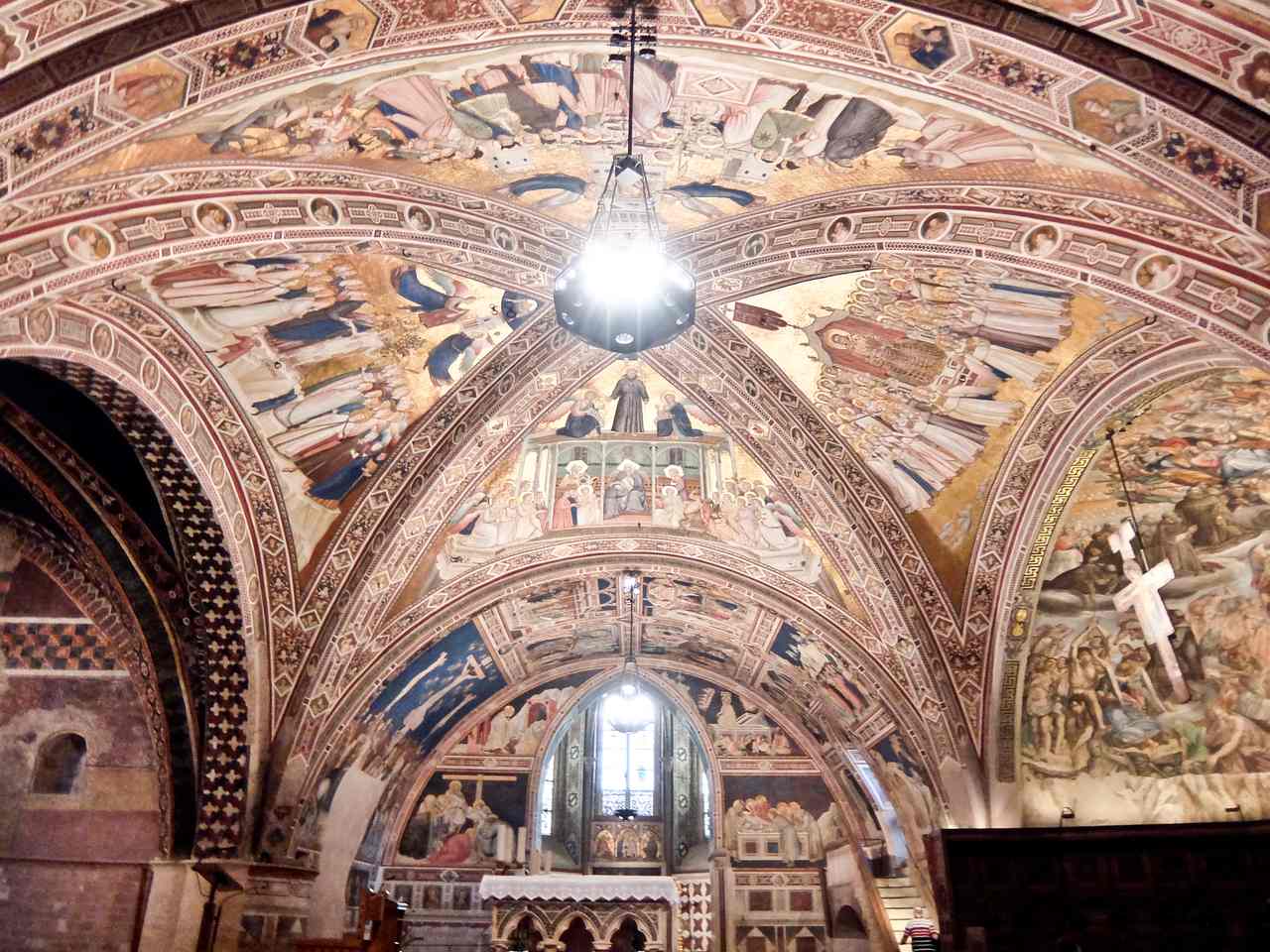Walled medieval hilltop towns, renaissance palaces and stunning churches are some of the many attractions of Umbria.
Start in Perugia, the capital of Umbria and one of the best-preserved of the region’s hill towns. The walls are still intact, encircling the medieval centre, and you can easily spend a few days here exploring its steep streets. The rail and bus stations lie below so don’t think about walking with your suitcase. Fortunately, there’s a rail link, the MiniMetro, which takes you to the historical heart, or a series of escalators that whisk you through the catacombs of the Rocca Paolina, up to Piazza Italia.
Fontana Maggiore
From here, the Corso Vannucci, known simply as Perugino, the spine of the city, leads up to the Fontana Maggiore in front of the San Lorenzo cathedral. It was built by Nicola and Giovanni Pisano between 1275 and 1278 and supplied drinking water from Paciano, a spring just outside the walls. The three basins acted as a medieval teaching aid – they’re covered in reliefs portraying Adam and Eve being expelled from paradise and small statues representing biblical figures.
Nobile Collegio del Cambio
Medieval buildings, including the Priori Palace, line the sides of the Perugino, and narrow alleys tumble down to the massive walls below. The Nobile Collegio del Cambio, the headquarters of the Moneychanger’s Guild, contains stunning examples of Renaissance art. Between 1498 and 1500, Pietro Vannucci, with the help of his young student Raphael, decorated the entire room with a cycle of frescos. They depict religious scenes featuring the Nativity and Transfiguration of Christ and female representations of the four cardinal virtues and depictions of famous figures of antiquity.
Perugia Gates

The seven Etruscan gates were built between the fourth and third centuries BC. In the medieval period, these were modified, and an outer circle of walls sprung up with an additional five gates. The Arco Augusto was the main entrance to the Etruscan city, built in the third century BC, and the largest of all the gates. A Renaissance loggia was erected on the top of the left hand tower in the 15th century and the fountain at the base was added around a hundred years later. Perugia has adopted the gate as a symbol of the city.
The Porta Romana triple-arched gate was the main ceremonial entrance to Perugia in medieval times and once consisted of two separate gateways. The inner part, dating from 1300, is the most ancient and, in the alcove above the western arch, is a painting of the Madonna of the Rosary with Saints Dominic and Francis. The outer façade was added in the Renaissance, when the city decided they needed something more triumphant, but it was never completely finished.
The countryside around the city is a notable wine-producing area and you can follow the Strada dei Vini del Cantico all the way to Assisi. If you don’t want to go that far, then both the Goretti winery, just outside the city, and the Lungarotti winery in Torgiano offer tastings.
Assisi

Assisi is a well maintained medieval town, surprisingly not too overwhelmed by tourists. There are no shortage of churches here, including the converted Roman temple of Minerva in the main square, but the star of the show is the Basilica di San Francesco. In fact it’s actually a double decker of a building with two churches on top of each other. As you’d expect, the lower one was built first, between 1228 and 1230, and in the crypt lie the remains of St Francis.
The upper Basilica was begun after 1239 and its walls are decorated by one of the world’s most famous works of art, the frescos of Giotto and his pupils. They depict 28 scenes from the life of St Francis, starting to the right of the altar and run clockwise around the church. Above each one is a corresponding image from the Old and New Testaments, an attempt to convey the bible to people who couldn’t read or write. It’s hard not to be moved by these scenes, even if you’re not remotely religious.
Gubbio
Perched on the steep slopes of Monte Ingino, Gothic Gubbio climbs up from the plains, with the forested Apennines providing a glorious mountain backdrop. The streets lead upwards towards Basilica di Sant’Ubaldo, with the funivia or cable car, providing final assistance. From here there’s a glorious view of the town below and the mountains in the distance.
The Piazza Grande, lower down, has two palaces at either end – the 14th-century crenelated Palazzo dei Consoli, with its imposing tower, houses the Museo Civico, and the Palazzo del Podestà, now the town hall. Nearby, in front of the 14th-century Palazzo del Bargello, stands the Fontana dei Pazzi (Fountain of the Lunatics), where reputedly you go mad if you run around it three times. As you can imagine there are many tourists who test this theory.
Fact File
FLY: Ryanair flies from Stansted to San Francesco d’Assisi Airport, about 15 km outside Perugia.
INFO: Welcome to Perugia has information about the city.
Umbria Tourism has information about the region.
STAY: Hotel Sangallo Palace is a comfortable base close to Perugia’s historic centre.
Credit: Source link